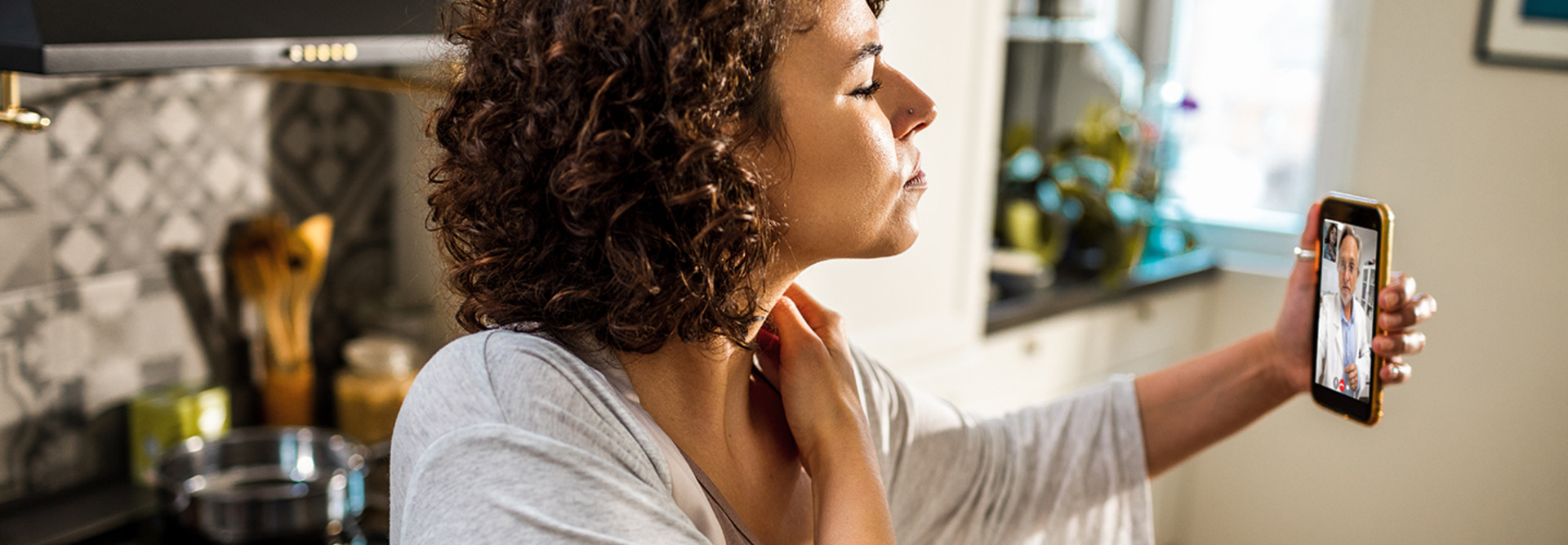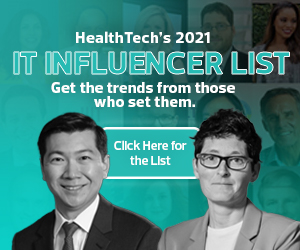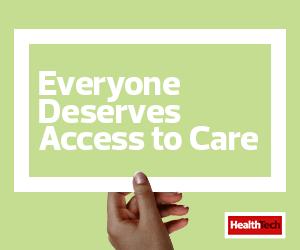HEALTHTECH: What made you want to become a doctor?
SANDS: The original thing that pushed me toward medicine was a specific experience. I had no doctors in the family, so I didn’t really know healthcare from that perspective, but I always really liked science and liked to help people and interact with people. There was a friend of my father’s who was the chairman of neurology at the Cleveland Clinic, and he took me under his wing and introduced me to medicine. He showed me how interesting it was — interacting with patients and making a diagnosis is really an interesting process. That was what excited me about it, and that’s why medicine appealed to me.
HEALTHTECH: Could you give us an overview of your career?
SANDS: I went to medical school because I liked diagnosing complex patients and I liked the relationships that I could have with patients. But I also was thinking about engineering because I had this technology background. The thing that really frustrated me about medicine is that we weren’t taking advantage of information technology to take better care of patients.
I really agonized over this. Ultimately, I found out there were other people who were also frustrated about this and trying to make healthcare better through the application of information technology. That led me to the field of medical informatics. I sought out and did training in medical informatics at Harvard and Beth Israel in Boston, which is now Beth Israel Deaconess. I was working with other doctors who had this information technology background, and they were trying to make healthcare better. I was committed to creating tools not just in a laboratory, but at Beth Israel, I was creating tools that served all our clinicians. We were empowering hundreds of practices and thousands of clinicians using information technology tools that I was helping to develop. That was exciting to me.
I realized that these information technology tools, while tremendously empowering for clinicians, could be even more empowering for patients and caregivers. I started using email with patients way back in the early ’90s, when nobody was doing that. My colleagues thought I was crazy for doing that. But I thought, this is really powerful. This is a way to take care of patients remotely. This is a way to educate patients, to keep the connection going between patient and doctor, even in between visits.
When I helped develop our first clinicians portal at Beth Israel in the mid-’90s, when the web came on the scene, I created a page of patient healthcare resources. Why did I do that? Because I wanted to increase awareness among clinicians. This was not a patient portal; this was a clinicians portal. I wanted to increase awareness among clinicians about these resources so that they could prescribe them for patients.
READ MORE: The future of healthcare starts with a digital experience.
All these experiences ultimately led me to fall in with a group of people who were all trying to think differently about the future of healthcare, where patients have a different role than they’d historically had in healthcare. We were brought together by a man named Tom Ferguson, who was a doctor who never practiced but became a keen observer of healthcare. He was interested in patient self-care and patients’ role in their care. Around the time I joined that group, I co-developed one of the nation’s first patient portals that not only allowed secure messaging between patients and their healthcare team, but also allowed patients to see their records online. That was important. Of course, now we all know those are patient portals, and they’re much more common today. That group of people, years later in 2009, co-founded the Society for Participatory Medicine, a nonprofit that I’m still involved with today as the chief advocacy officer.
After almost 14 years at Beth Israel Deaconess, I was recruited to join a company called Zix to be its chief medical officer. It was a fascinating experience. I was woefully unprepared for this kind of a role in the for-profit space. I went to this corporate environment where I had to review financial documents every quarter and attest to their veracity. I learned a lot through that transition, and it was just a fantastic experience.
After about two years there, I was recruited to join Cisco to help lead its healthcare efforts as chief medical informatics officer. Cisco was really trying to change the way it thought about customers by understanding their businesses and forging relationships at the C-suite level rather than at the network services level. Our team did work building these relationships and helping the company understand where the industry was moving. It was just fantastic. I was there for about six years.
Since late 2012, I’ve been working with a variety of companies, usually on a long-term basis, either as a medical advisor or more often as a part-time chief medical officer. All the while, I continued to see patients. Even when I was full time at Zix or Cisco, I was still seeing patients part time because it kept me grounded and it was part of who I am. And it provided me fodder for the work that I did at the companies, because I’d be able to draw from my experiences and share these experiences with customers. That has been very powerful.
HEALTHTECH: Over your career, how do you think healthcare’s relationship to technology has changed?
SANDS: When I was a resident back in the early ’90s, very few people were thinking about the use of technology in healthcare. But over the next five years or so, the internet came on the scene, and more people were using electronic health records. I think clinicians reluctantly came around to the understanding that we really need technology to take better care of patients, as much as they cursed it at the time.
A lot of that was also pushed along by government incentives through the HITECH Act, which encouraged practices to adopt EHRs. It really led to the near universal adoption of EHRs.
If you ask clinicians or doctors what they think about the use of technology, they’re going to say, “Oh, I hate the thing. It’s terrible.” And it’s true. There’s a lot of terrible technology and user interfaces out there. Unfortunately, many of these EHRs were adopted because they improved billing, but they weren’t really focused on clinical care. The EHR I helped develop at Beth Israel Deaconess was focused on improving the way we deliver healthcare. That’s a different mindset. On the other hand, if you ask clinicians if they would they give up using technology and go back to paper, all of them would say there’s no way they’d go back to paper.














